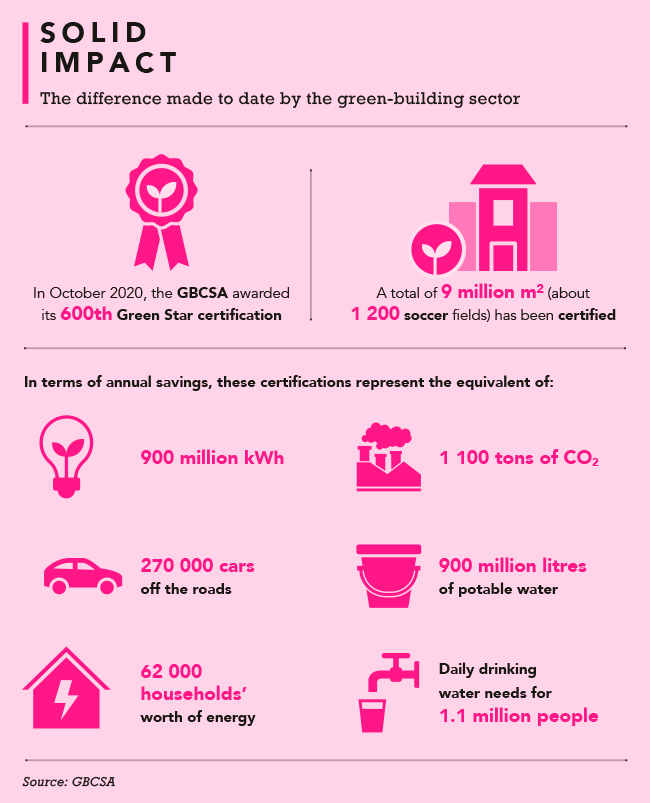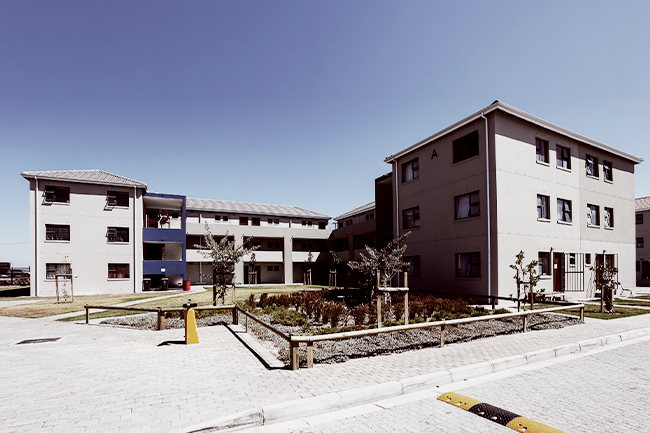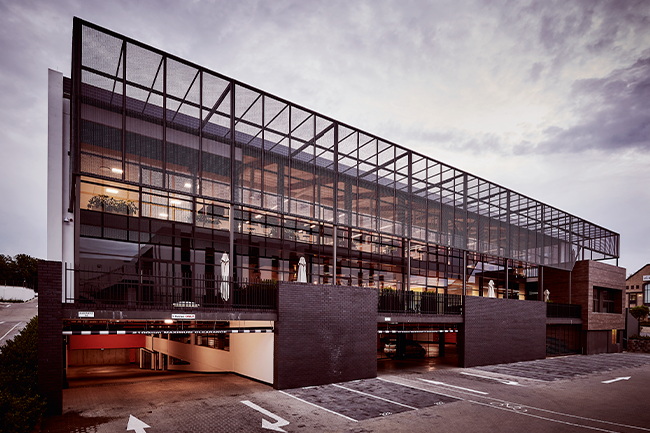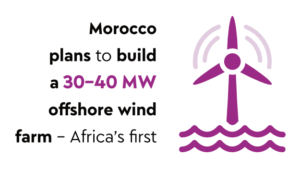Green buildings are healthier for people; better for the planet – and now there’s Africa-based evidence that green was also more profitable during the pandemic. The MSCI 2020 South Africa Green Annual Property Index – featuring 289 prime and A-grade office properties, of which 139 are green certified – reflects a 31% higher capital value per square metre for these green office buildings as well as a lower vacancy rate and a higher net operating income.
The debate about the upfront cost of green buildings compared to their long-term payback is maturing in South Africa and tentatively being discussed in the rest of sub-Saharan Africa, as the benefits in the commercial sector are well documented. While property developers reap rewards from the growing demand for green-certified office buildings and the fact that they are considered a lower-risk investment, their tenants enjoy reduced utility bills and improved indoor comfort.

The environmental benefits are quantifiable too, as green buildings not only reduce negative impacts by using less water, electricity and natural resources, but they can also have a positive impact by generating renewable energy and increasing biodiversity. Worldwide, buildings account for nearly 40% of all greenhouse gases emissions, and the World Green Building Council (GBC) is striving for net zero carbon in new buildings by 2030 and total decarbonisation of the sector by 2050.
‘COVID has been the tipping point for many issues that green buildings and the Green Building Council South Africa [GBCSA] have been advocating for many years,’ says the organisation’s CEO Lisa Reynolds. ‘As load shedding brought issues of energy efficiency, resilience and alternative energy to the fore, COVID has been the catalyst for more flexible working arrangements, greater online collaboration – which means less time spent in traffic and emission from transport and so on – as well as the focus on better indoor-air quality in commercial and residential spaces. These changes have been significant and have great environmental and productivity benefits.
‘More than ever, property owners understand that buildings are made for people, and to attract tenants they will need to offer the best possible spaces where people feel safe and comfortable. And certified green buildings, where you can be assured of the green claims made, provide this.’
South Africa is leading the continent’s green-building movement, with the GBCSA constantly updating and adding new certification tools and research, while also providing training, education and mentorship in other sub-Saharan Africa countries. Four years ago the NPO rebranded its ‘Green Star South Africa’ rating to ‘Green Star Africa’, and has been collaborating within the Africa regional network of the World GBC for a nuanced approach to green building, taking into account that the region alone covers six different climatic zones as well as diverse cultural, political and economic landscapes.
Solid Green, a Johannesburg-based sustainable-building consultancy, has been assisting the GBCSA in developing energy-efficiency standards and policies in the region. ‘Green buildings are on the increase in Africa; we are currently working on green-building projects in Botswana, Namibia, Mauritius, Kenya, Ghana and Rwanda,’ says Marloes Reinink, founder and director of Solid Green.
‘The main drive for green buildings comes from developers and corporations wanting their new office buildings to be green. Recently, one of our projects received the first Green Star certification in Botswana.’
The Motswere Plaza II in central Gaborone is an A-grade office space named after the indigenous motswere or leadwood tree that grows near it. It was awarded a 5-star Green Star Office Design v1.1 rating for features such as the use of green (low-volatile organic compound) materials, its PV solar system, recycling facilities and the fact that the windows maximise daylight while controlling glare. In Nigeria, where green building is also still in its infancy, Unilever’s Lagos office scored a 4-star Green Star Interiors v1 rating.
Meanwhile, the Kenya Green Building Society (KGBS) recently became Africa’s second ‘established’ green-building council, reaching top-tier membership status at the World GBC. ‘We intend to train over 100 professionals in the building sector annually and are in the process of training the various ministries in charge of housing and urban development as well as the National Construction Authority,’ says Ted Otieno, who earlier this year replaced the long-standing KGBS chairperson Elizabeth Wangeci Chege. Under her leadership, the society lobbied the Kenyan government, which in July 2020 decreed that affordable housing-development projects must meet the EDGE green-buildings standard. This stands for ‘Excellence in Design for Greater Efficiencies’ and is a free software tool from the IFC. To qualify for EDGE certification, buildings have to use at least 20% less electricity, water and embodied energy than baseline cases.
In a milestone for the region, the Kenyan government announced it would provide developers with free land if they met the specified conditions for building affordable, resource-efficient housing projects.

Further south, the green-building movement is also catching the attention of low-income housing developers in Johannesburg, Cape Town and Durban. The country’s first formal green social-housing development, Belhar Gardens, achieved EDGE certification in 2018 for its water- and energy-conserving design. ‘There is enormous potential for greener building solutions in the affordable-housing segment, and we would love to see more projects getting EDGE certification,’ says Reynolds. ‘This is a sector where the water- and energy-saving benefits of green-building principles and technologies have a very tangible monthly benefit.’
Belhar Gardens, which she describes as ‘a fantastic project’, reportedly saves its residents on average more than one month’s rent per year. In 2020, the GBCSA awarded a further seven projects the EDGE ‘post-construction’ certification. Among these were Green Court and Stepney Green in Parklands, a mixed-use development with 357 affordable housing units and a small retail space. The green features of this development range from a reduced window-to-wall ratio and a hollow-core precast slab for the floor and roof, to external shading devices, solar hot-water collectors, dual-flush toilets and smart meters.
High-end residential developers are also picking up the green movement. Reinink gives the example of Balwin Properties. ‘All their residential units are developed to be EDGE certified and they also developed a green home loan in collaboration with Absa. All the lifestyle centres at their residential developments are to be 6-star Green Star and net zero carbon certified.’
Corporates as well as retailers are showing interest in greening interior fit-outs, wanting to maximise their environmental impact through interior design, says Reinink. ‘This approach has a lot of benefits in terms of creating healthy spaces for occupants, which talks to the after-effects of COVID-19 and employers wanting to create safe and healthy spaces for their staff to return to.’
The implication of occupant well-being is huge, agrees Reynolds. ‘The events of the last year have caused many to reflect on what is important, and there is an understanding that buildings need to be places where we, the occupants, can thrive. Finally people are paying attention to their air-conditioning and ventilation systems, and looking to systems that provide better air quality, more fresh air changes and even the option to purify air. People are also more aware of having openable windows.
‘As individuals working from home, we are suddenly paying more attention to what makes a comfortable working space – the temperature, glare, noise levels and so on – and this makes us more aware of what we can and should demand from a working space. And once again, these are the things that green building has always focused on ensuring right from the start of an office-building project, in the design phases.’

The broader green-building philosophy goes beyond single buildings, with the GBCSA offering a ‘green precinct’ rating tool.
‘In general, I prefer an emphasis on sustainability and inclusion rather than just green building, as this aligns better with international and national policy and science-/evidence-based methodologies,’ says architect Jeremy Gibberd, a consultant and academic whose extensive research includes sustainable development at neighbourhood scale. He explains that in this context, the location is paramount as, ideally, people should have access to the right mix of services and live in easy reach of food, education and work.
Such a broad sustainability approach could help Africa in addressing the challenges of social inequality, dwindling resources and climate change. Adding to uncertainty is the commercial-property market, which according to Reynolds is in flux.
‘We have yet to see how this will settle, however there is definitely a greater interest in green buildings,’ she says. ‘And we are unlikely to see things going back to the way they were pre-COVID.’
By Silke Colquhoun
Images: Mainstraight Office Park, Peet Mocke/Highbury Media Images
















